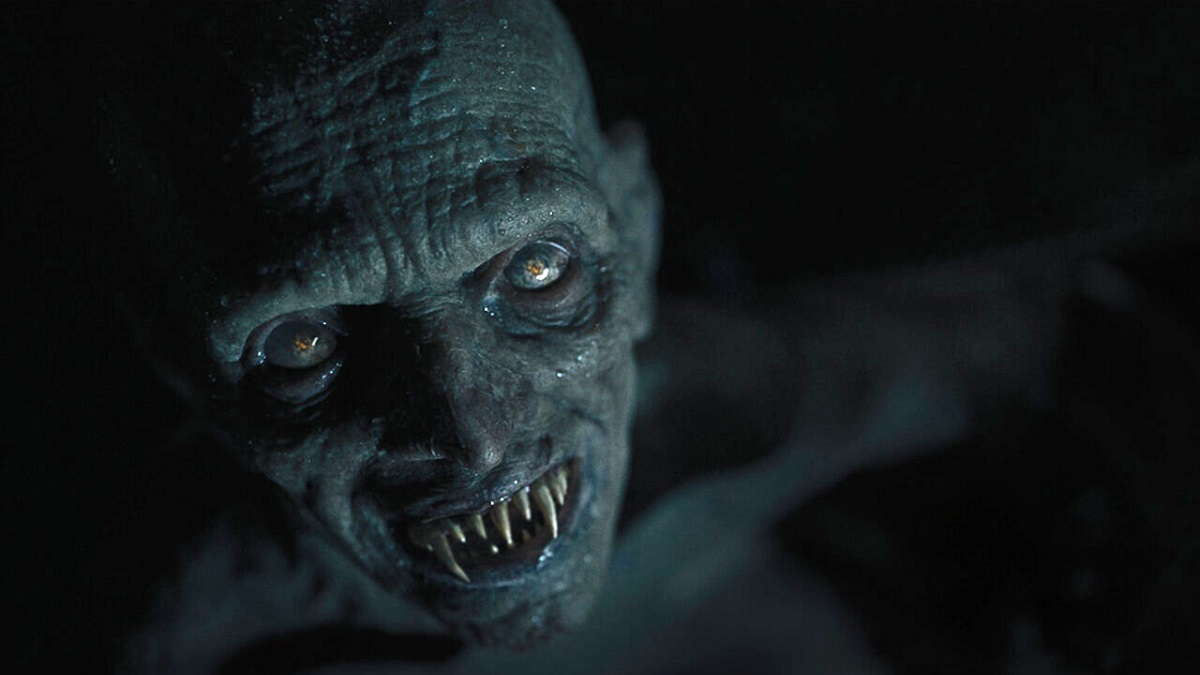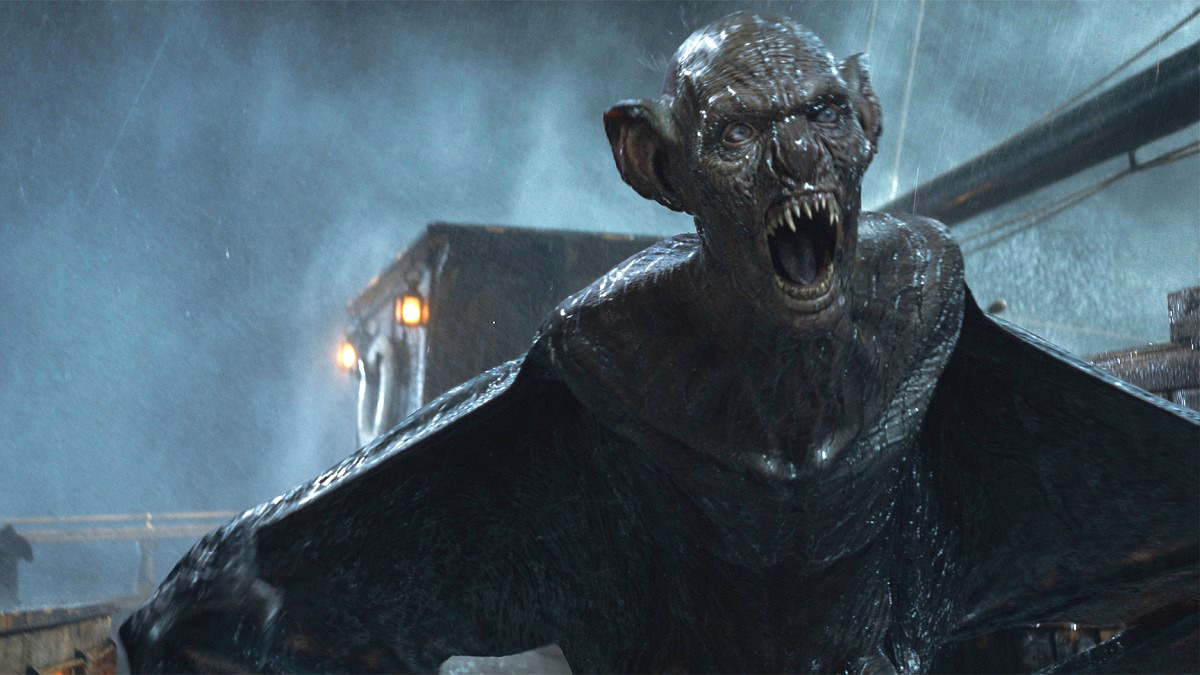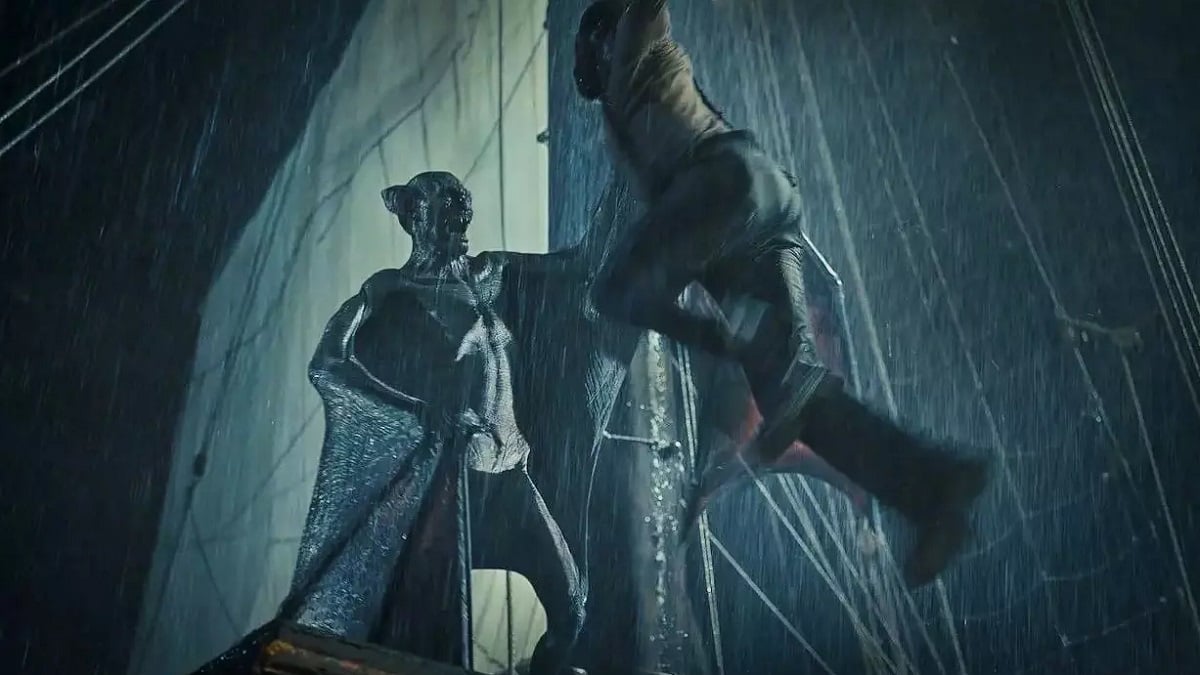Throughout its two-decade stint in development hell – during which time a number of names on both sides of the camera have come and gone – The Last Voyage of the Demeter has always retained the same elevator pitch; it’s Alien, but with Dracula instead of a Xenomorph, and at sea as opposed to in space.
That logline enough is alone to ensure that the incoming horror will at the very least differentiate itself from the dozens upon dozens of direct, spiritual, or thinly-veiled adaptations of Bram Stoker’s iconic source material, but is a single chapter relayed through the eyes of the titular vessel’s captain really enough to sustain an entire feature film? Frustratingly, the answer is both yes and no.
Another downside of doing Dracula for the umpteenth time is that everybody knows the beats and intricacies inside out, and in the case of “The Captain’s Log,” that means everybody is dead well before the Demeter reaches the shores of Whitby. Trying to create tension, dread, and unpredictability when anybody with even a passing knowledge of the original text has no reason to invest in the characters is a tricky task, but genre maestro André Øvredal makes a decent stab at it.

The opening act is all table-setting as you’d expect, introducing protagonist and erstwhile audience surrogate Clemens (a strong Corey Hawkins turn, complete with admirable English accent). He wants on the ship, everybody says no, and then five minutes later he’s welcomed aboard. Why? Because the first of many ominous intonations from a prospective member of the party makes it perfectly clear those 50 wooden crates marked with dragon insignia are not something to be trifled with.
There’s a lot of that in The Voyage of the Demeter, to be fair, and it gets tiresome after a while. Everybody speaks in hushed tones about “evil,” “the devil,” “the creature,” “curses,” and so forth, as if the audience isn’t completely aware of the dangers having an emaciated, hungry, and altogether horrifying vampire aboard and lurking in the shadows possesses.
On the plus side, the fairly open-ended nature of “The Captain’s Log” does give Øvredal and his cast plenty to play with in terms of having a relatively blank canvas. What happens during the voyage is mentioned in passing, so it’s up to the key creatives to ensure that their envisioning of what went down is one that sticks in the memory.

Liam Cunningham’s Captain Elliot, David Dastmalchian’s first mate Wojchek, Aisling Franciosi’s unwitting stowaway Anna, Jon Jon Briones’ cook Joseph, Woody Norman’s youngster Toby, Stefan Kapičić’s superstitious Olgaren, and the rest of the assorted ready-made meals on board end up slowly descending into the mouth of madness for various reasons, replete with the obligatory “there’s no monster here” spiels that quickly get proven wrong in gruesome fashion.
Speaking of said monster, creature performer extraordinaire Javier Botet makes for a ghoulish, haunting Dracula… for the most part. Lurking in the shadows, curling his withered mouth into a terrifying grin, and popping up out of nowhere for his latest fix of delicious plasma, the practical effects are suitably gnarly as the Transylvanian terror slowly begins restoring himself to former glories, even if takes the crew a lot longer to cotton onto his masterplan than it should. Unfortunately, the third act devolves into full-blown CGI overload territory, and it’s not unfair to say that a pixelated bat-like creature is a lot less frightening than something that’s clearly tangible and in-camera, ensuring that Dracula’s impact lessens the more time he spends onscreen.
There’s no shortage of bloodlust to satiate the gorehounds, though, with geysers of the red stuff liberally spurting every which way, but it’s the fog-smothered moments of intimate fear that hit harder. The Last Voyage of the Demeter often feels as though it’s torn between the desire to maintain a smaller scale and the apparent necessity for every studio-backed release to throw it all at the wall come the finale, and there are no prizes for guessing which of the two warring sentiments proves to be stronger by the time the credits come up.

Arguably the best character to be found throughout – make of it what you will – is the ship itself; a labyrinthine, creaking harbinger of doom that’s left everyone aboard fated to never set foot on dry land again. The production design, lighting, and craftsmanship enhances the feeling that anything can happen to anyone at any time (as long as it’s dark, of course), but in the end The Last Voyage of the Demeter simply can’t stop itself from devolving into yet another Hollywood horror that favors effects-driven carnage in favor of the vastly superior and eminently more spine-tingling practical terrors that defined the first two acts.
Don’t worry, because it won’t be long until the next Dracula movie comes along, although at the very least it’ll struggle to replicate the sheer visceral impact of Botet’s unnervingly creepy interpretation, up until the point an actor in a costume gets replaced by an army of angry pixels.











Published: Aug 10, 2023 11:15 am